Excerpts from Jim Conrad's
Naturalist Newsletter
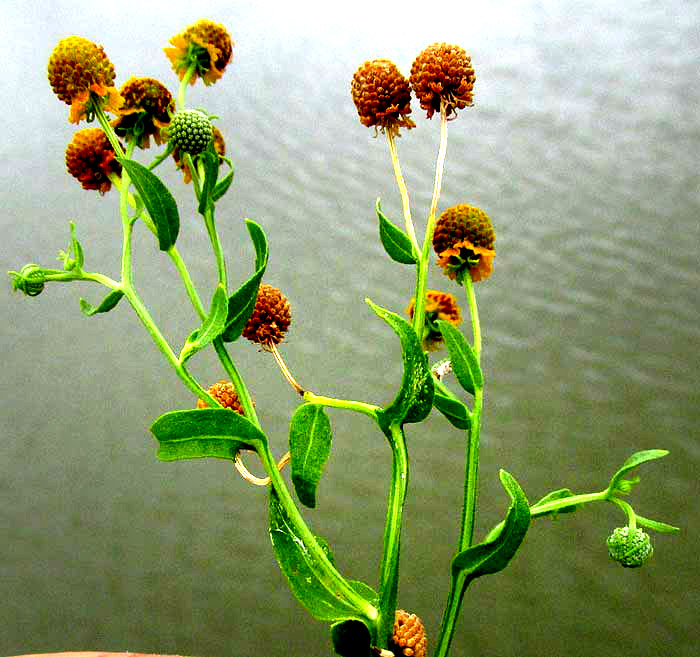
from the August 3, 2014 Newsletter issued from the Frio Canyon Nature Education Center in the valley of the Dry Frio River in northern Uvalde County, southwestern Texas, on the southern border of the Edwards Plateau; elevation ~1750m (~5750 ft); N29.62°, W99.86°; USA
SMALLHEAD SNEEZEWEED
At Cook's Slough Nature Park on Uvalde's south side, some of the low levees separating water treatment ponds are fairly overgrown with the dense, much-branched, knee-high, weedy member of the Composite or Sunflower Family shown below:
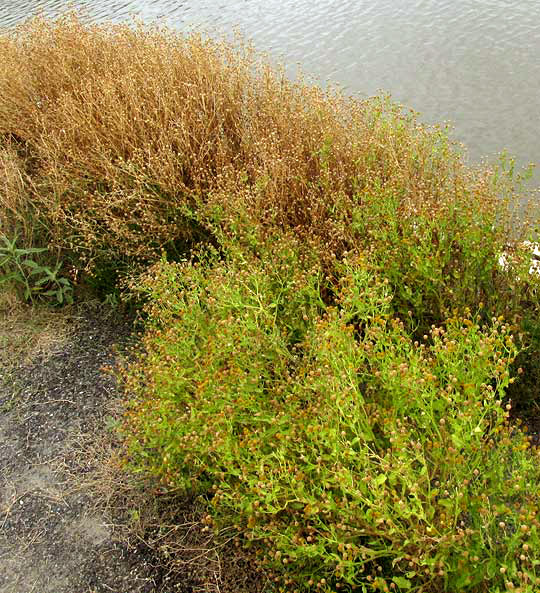
Nowadays we're at the end of this species' peak flowering period, and most plants, which are annuals, are drying out crisp and brown. In the above picture a green plant still bearing flowers occupies the foreground while in the background you see plants in the dried-out, apparently dead state more typical at this time. At first glance the plants couldn't look more scrappy and disreputable, but up close you start seeing interesting details, as shown at the top of this page.
Among those flowering heads we see a green head with its disc and ray flowers not yet expanded, some older heads on which the fruits are developing, and some heads in full flower, though the "rays" below the spherical part are much tinier than in "normal" composite, daisy-type flowers. On all the heads it's the spherical part that strikes us a most unusual. A close-up of a single head enabling us to see better what's going on is shown below:
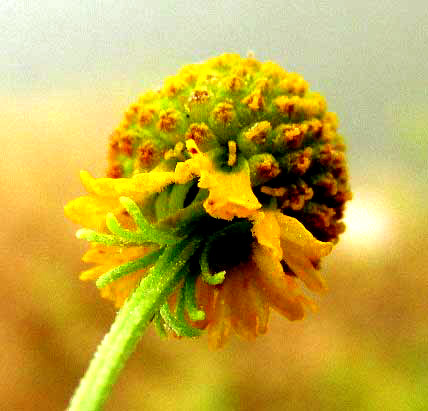
At the head's bottom, those slender, curved, green things are the bracts or scales forming the involucre, individually known as phyllaries. This species' phyllaries are unusual because they're so slender and projected downward. In most composite flowering heads phyllaries are somewhat triangular , directed upward, and overlap one another like shingles on a roof as they form a kind of green bowl for the flowers. The yellow, petal-like ray flowers are very unusual because their yellow blades are so short and inconspicuous. The spherical part, which is distinctive just because it's spherical and not flat or convex, consists of closely packed disc flowers affixed to a spherical, vegetative platform known as the receptacle. Below, you can see the receptacle of a head from which part of the disk flowers' mature, cypsela-type fruits have been removed:
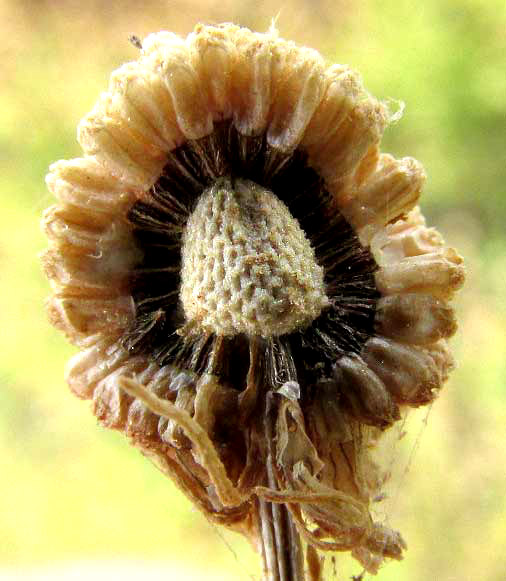
The plant's leaves also do something interesting: Their margins, instead of narrowing to a petiole, often flow onto the stem itself, forming green, narrow "wings" along the stem below the leaf. A closer look at a leaf and the plant's "winged stems" is shown below:
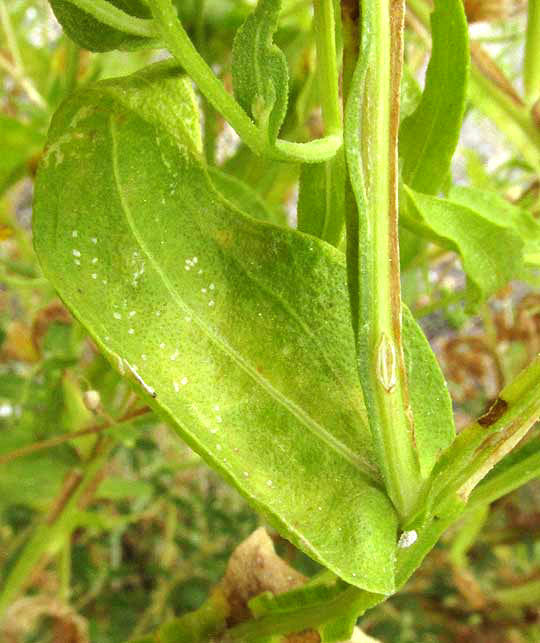
Earlier we've profiled plants displaying this exact combination of anatomical features, though at first glance the plants looked very different. Back East a common weed along dry, sandy roadsides with these features is the Bitter Sneezeweed, shown on our page at http://www.backyardnature.net/n/h/sneeze.htm.
Another plant with the same basic features, though looking very different, is the local Pretty Sneezeweed shown at http://www.backyardnature.net/n/h/helenium.htm.
Both of these sneezeweeds belong to the genus Helenium, so the moment this Uvalde plant revealed its flower structure, it was pretty clear that it was yet another Helenium. That's not surprising, since seven sneezeweed species are listed for Texas.
With its exceedingly small heads, our Uvalde plants are appropriately named Smallhead Sneezeweeds, HELENIUM MICROCEPHALUM, with that microcephalum in the binomial meaning "small head." In the US Smallhead Sneezeweeds occur from Arizona to Oklahoma south into northern Mexico.
Small, seed-eating birds such as finches can easily be imagined perching on the plants' stiff stems as they feed on tiny, dry fruits, but Smallhead Sneezeweeds are otherwise famous in these parts as being highly toxic for grazing livestock. A webpage of the Uvalde Research and Extension Center, associated with the Texas A&M University System, reports that Smallhead Sneezeweed is extremely poisonous to livestock, even mules and goats, causing 'spewing sickness," the symptoms of which are "... weakness and staggering, diarrhea, vomiting green material, green salivation or discharge from nose, bloating, gastroenteritis and death."